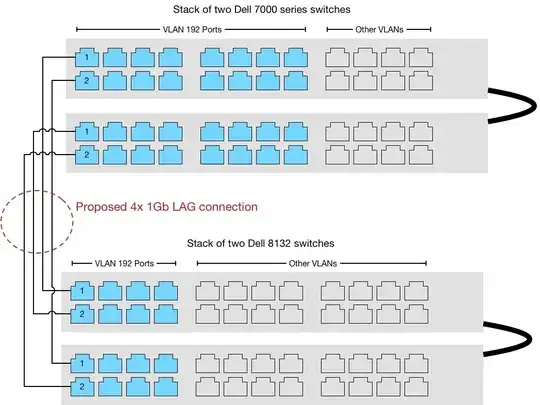Right now we have two independent switch stacks jointed with a single ethernet cable. For throughput and redundancy I would like to join them with a LAG. One switch stack is made up of Dell 7048's, the other is Dell 8132's (now called N4000 I believe). See diagram below.
I cannot for the life of me figure out how to create a LAG between these switches. The ports in question are all on the same subnet (marked blue in the diagram) so there is no VLAN tagging / trunking required, I think. I just want all the blue ports to behave as one switch. I also cannot figure out how and whether LACP comes into play.
Can someone please either provide me with specific instructions or guide me to a specific tutorial about what settings I should be using? I prefer using the web admin GUI but I do have serial access to the devices if need be. Any advice or guidance would be much appreciated.

